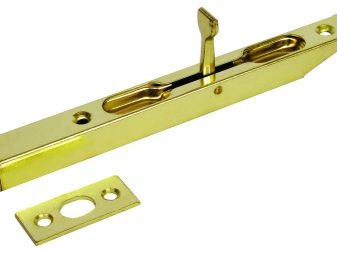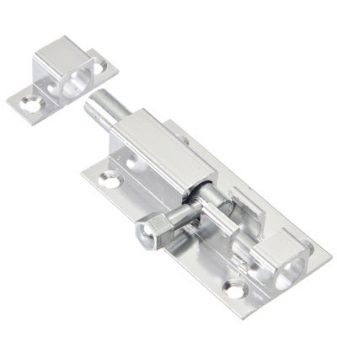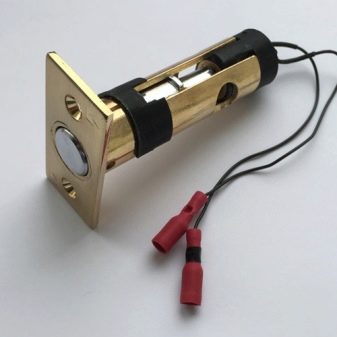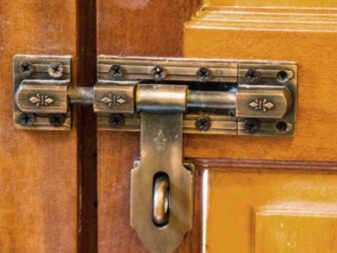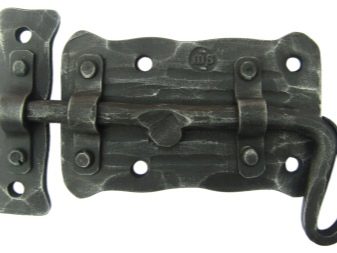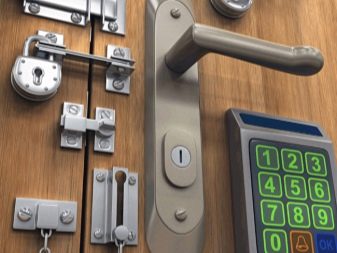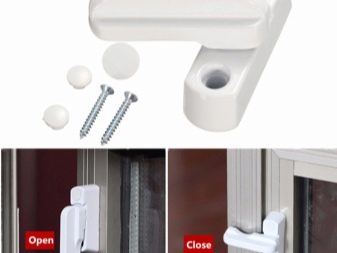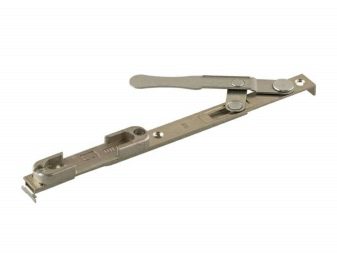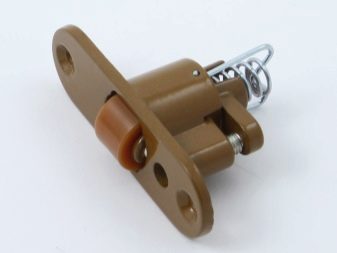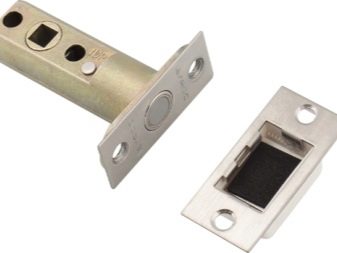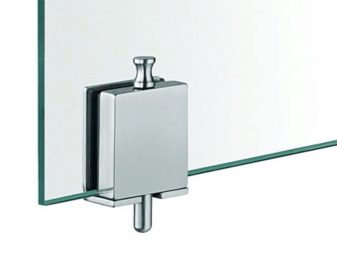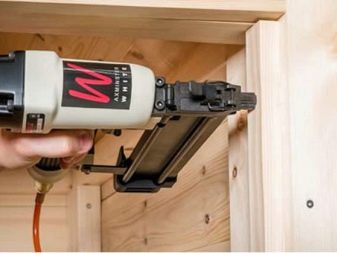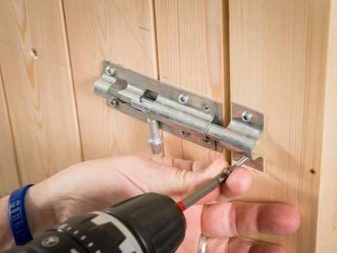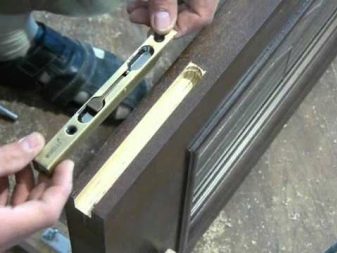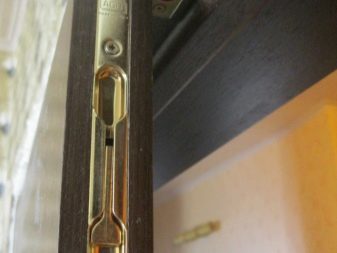Latches: types and their parameters, design options and installation workshop
Of course, high-grade locks are usually needed only for entrance doors. But for interior doors often need latches to help hold them in the closed position. This is especially true for domestic premises: bathrooms, toilets. In such situations, rescues a simple sliding device - a bolt.
What it is?
The door bolt is a locking device in the form of a valve, the so-called small bolt.
According to GOST, these mechanisms are made of various metals and their alloys, among which the most common are aluminum, steel, brass and copper. Also currently produce plastic latches.
There are quite a few models of these simple latches, and you can easily get the most suitable option for your doors.
Kinds
Door gate valves can be divided into several types, read more about them.
- Mortise bolts. The most popular type of sliding devices. It is installed inside the door body during installation. Does not spoil the appearance of door designs, it is usually used for doors with two leaves. The only drawback is that in case of a breakdown you will have to complete a rather laborious replacement process.
- Embedded. Mounted on the height of the canvas, it is possible to open both the top and bottom of the door. To install them you need to prepare a groove in the door leaf. In addition, the products are almost invisible from the side.
- Overhead. Mounted to the surface of the door body and the doorjamb with screws. Very noticeable, so it is recommended to select such devices in harmony with the color of the door material and the rest of the furniture. They are distinguished by their extremely simple installation, low cost and a variety of models suitable for any door material.
Also the bolts are manufactured as additional elements for the hinged locking mechanisms.
By the principle of operation of the valve, products can be divided into mechanical and automatic; by type of construction - open and closed. Mechanical mortise models are equipped with a swivel handle for closing and opening the bolt.Automatic latches are often spring-loaded, with a button for fixing the position of the bolt. In open mechanisms, in any position, all the details of the structure, including the locking rod, are visible, while in closed ones, only a part is visible.
Electromechanical valves, especially radio-controlled, are gaining popularity. Devices of this type are mounted in a mortise manner into the body of the door. For the procedure of opening and closing such heck you will have a special key in the form of a key fob with a button. If the key fob is lost, the old codes are deleted from the system and new ones are introduced. To maintain the functioning of such a sliding device, even in the absence of power, a small battery is built in.
Materials
According to the material of manufacture, only two types of latches are distinguished: plastic and metal. Naturally, the durability and strength of metal products is much higher than that of plastic models.
To increase the attractiveness, many models of latches are covered with aluminum, copper, brass, imitate gold and silver plating. The basis of the device is usually made of stainless steel.
If you want to create a unique style in the room, even in small things, do not be stingy, draw a sketch and order yourself forged valves.
Dimensions
The dimensions of the products range from small ones - for doors of cabinets, wardrobes and other furniture, to large latches installed on the entrance gate.
When choosing valves, pay attention to the size of the door leaf, in particular, its thickness. If the door is thin, then you only fit the invoice type of latches. For thick doors made of solid wood or metal, devices are recommended that are embedded or embedded, they are more reliable and durable than overhead.
Design
Latch design varies greatly - from retro-style decorative snaps to simple metal locking devices. When choosing latches for your doors, consider the overall design of the room - if it imitates an old house, you will agree that ordinary false latches will not fit into the interior. In this case, you can use either hidden mechanisms - mortise or recessed, or, after consulting with the designer, to order exclusive gate valves.
How to choose?
When choosing valves for the door structure, first of all it is necessary to pay attention to its material, the thickness of the door leaf. Then choose the method of controlling the mechanism - mechanical or automatic, the material from which the device is made, the model and dimensions of the product. Then, given the color scheme, choose the model you need.
Latches for plastic doors have their own characteristics. Most often for them use the invoice mechanism of the closed type. Each door structure is equipped with its own locking device. For reliability, it is recommended to duplicate it, for example, set it at the top and bottom of the door leaf. The important point is the complete harmony in the colors with the door material.
For PVC door designs, you can choose the following types of clamps.
- Roller. They are a ball in a hollow cylinder / box, supported by a spring. Such clamps do not require much effort to open or close the door.
- Magnetic. Similar clamping latches act at the expense of the magnetized elements. They are characterized by durability and reliability.They function normally even with a slight distortion of the door body.
- Falevy. Such devices are designed with a spring-loaded bolt. When it enters the prepared recess, the tongue is fixed and the door structure is closed. To open it you need to turn the handle.
For metal door constructions, it is not recommended to select overhead latches. After all, such doors are most often mounted as entrance doors, and the mortise or built-in type of products is most suitable for them. Also, for such doors, they increasingly began to use so-called night valves - for additional fixation of the closed position of the door leaf.
Any types of latches are suitable for wooden doors, here the choice depends on the purpose of the door construction: whether the door is an entrance, an interroom or to the ancillary rooms.
For glass doors use only overhead sliding mechanisms. Most often, the design of such devices is extremely simple - a hooked latch bolt or magnetic clamps. The most popular place to install these snaps is the bottom of the glass door.
How to put?
It is very easy to install a false latch on a wooden door with your own hands.
Step-by-step process:
- accurately mark the place of attachment of the main part and the strike plate;
- prepare recesses for fasteners;
- attach the main part of the mechanism and check its functioning - if the latch goes smoothly, proceed to the next step;
- attach the strike plate;
- close the door and test the latch again.
To install the overhead type latch on a metal door, it is necessary to use special pins from the same material. It is possible to buy them in the same place (store, shopping center) where you purchased the valve itself.
Two doors are usually installed on double doors: at the top and at the bottom of the door leaf.
It is recommended to install vertical mortise models for double door structures (including sliding ones) before hanging the door on the hinges.
It is produced as follows:
- you need to attach the side latch from the edge of the door body (from the top - for the top latch, from the bottom - for the bottom) strictly in the middle of the end face, and cut around the outline with chalk, pencil or pen;
- cut a groove frezer or chisel;
- insert a latch into the recess;
- fix its position with screws.
The counterpart of the latch is recommended to mount after installing the door on the hinges. Cover the door, mark the location of the groove for the bolt rod. Drill the required depth of the hole slightly wider than the diameter of the rod.
Close the door, check the functioning of the latch. If the latch closes smoothly and effortlessly, screw the mating part of the mechanism with self-tapping screws.
How to make a latch with your own hands, see the next video.


